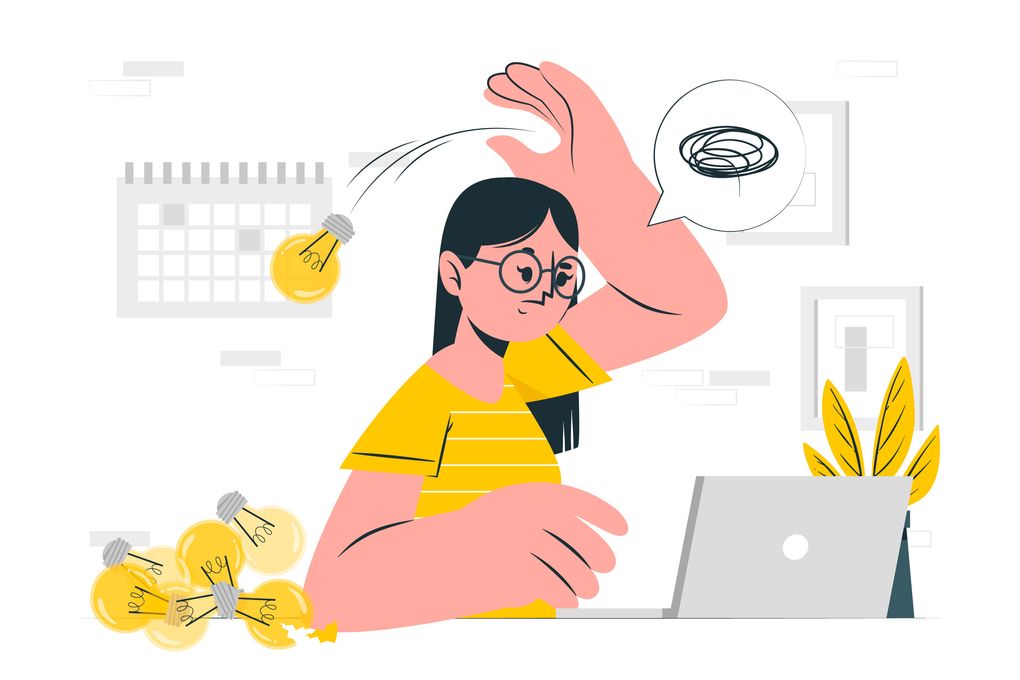The “Set Aside” Technique: Strategic Pausing for Innovation and Creativity

Vector created by storyset on freepik.com
When most people begin adding open, strategic pauses into their work and lives, they first focus on time for rest. Of course, this is needed—and critical—especially now. But it’s usually over time that a second wave of appreciation arises for the generative aspect of pausing. In quiet and unfilled moments, we experience the kind of white space that forms a healthy vacuum where creativity can blossom. It’s a place to hatch and nurture ideas, and one where lightbulb moments have room to arrive. This kind of pause is where we make things in our minds. Here lives time for growth, innovation, and problem-solving. We call it a constructive pause.
The Greyhound vs. the Butterfly—Nonlinear Thinking
What’s especially rewarding about this type of pause is the nonlinearity of thinking that comes with it—less like a greyhound dashing in a straight line to the finish and more like a butterfly stopping at unpredictable places before eventually returning with nectar. The process may be fluid and may involve weaving in and out of the topic at hand.
This flexibility is essential to the desired outcome. When we’re stuck on a problem we often keep running through the same associations and options to no avail. By stepping away we engage other mental faculties and experience what are called “incubation periods,” unconscious mental processes that aid in creative problem-solving. Scientists also describe this as “beneficial forgetting.” We can allow ourselves to rewire our thinking, disconnect from unhelpful associations, and replace them with new, unique solutions, which is exactly what we want.
A version of this truth was summed up by Mihaly Csikszentmihalyi, the man who wrote Flow and who is the unrivaled granddaddy of applied creativity. He writes, “In terms of using mental energy creatively, perhaps the most fundamental difference between people consists in how much uncommitted attention they have left over to deal with novelty.”
Read More: To Make Better, Easier Progress, Go ‘Async’ More Often
Open and Closed Modes
The legendary John Cleese, cofounder of Monty Python, is the man who brought us the joys of the “Fish Slapping Dance” and “The Argument Clinic” sketches and the antics of Basil Fawlty. I had the honor to speak to him about his use of white space, which fascinated me because not only is he an idol of mine, but he also taught businesses and executives for years with a message that overlapped with mine.
He says there are two types of work, the “open mode” (creative, flowing, unstructured) and the “closed mode” (executing, doing). Cleese believes one must step into the open mode (what we would call a constructive pause) for a healthy chunk of time—ideally ninety minutes—in order for your mind to sift through the first flurry of distractions and then clear the ground for play.
But he also taught me a constructive tool that has been the single most influential for me in my own creative practice ever since. There’s a story that he tells about him and the other Pythons during the rich early days of their creative process. One of the other performers, who he would keep nameless, was someone Cleese noticed had trouble coming up with the same level of ideas that he did. The difference was in their process. When this other performer would come up with an idea, if it was a good, solid idea he would go for it. Not so with Cleese. He noticed that when he came up with a good idea, he would note it, set it aside, and keep exploring. If another idea came, he would note it, set it aside, and keep exploring. As a person who has an itchy trigger finger for deploying my ideas, I’ve found this set-aside process instrumental in my own creative pursuits since I first heard it.
Steve Jobs echoed this instruction through a different lens. He often said that it’s pretty easy to kill bad ideas. But killing the good ones is what’s hard. People are proud of good ideas, and good ideas are tempting to grab onto, but they are not the same as great ideas, and they often take a huge amount of time and bandwidth that prevent the latter from ever manifesting.
The Set-Aside Technique/Process
In practical use the “set-aside” technique goes like this:
- I am tasked to solve a problem.
- A possible solution appears to me.
- I have a desire/inclination to grasp the first solution and act on it. (This moment of restraint is the key to the whole process.)
- I pause, set it aside, and keep exploring.
- I let an hour, a day, or a week pass and choose the best direction. Or I may decide to pause altogether to see if this is the best place to put my time, energy, and creativity.
This process not only changes the timing of acting on ideas but the intensity of my allegiance to them. They begin to appear less perfect and concrete to me, more like drafts than final products. And it slows me down, opening my mind to the number of options possible for every problem.
You can try the “set-aside” process alone or with a team. In group settings, it’s a great way to make space for the quieter members of a workgroup to voice their thoughts before the first idea runs the show.
Set aside your next good thought and see if a great one follows.
Related: Does Group Decision-Making Have to Be So Hard?
This article was also published on Juliet Funt's LinkedIn.
Leaderonomics.com is an advertisement free website. Your continuous support and trust in us allows us to curate, deliver and upkeep the maintenance of our website. When you support us, you allow millions to continue reading for free on our website. Will you give today? Click here to support us.
Personal
Tags: Self-Control, Creativity





